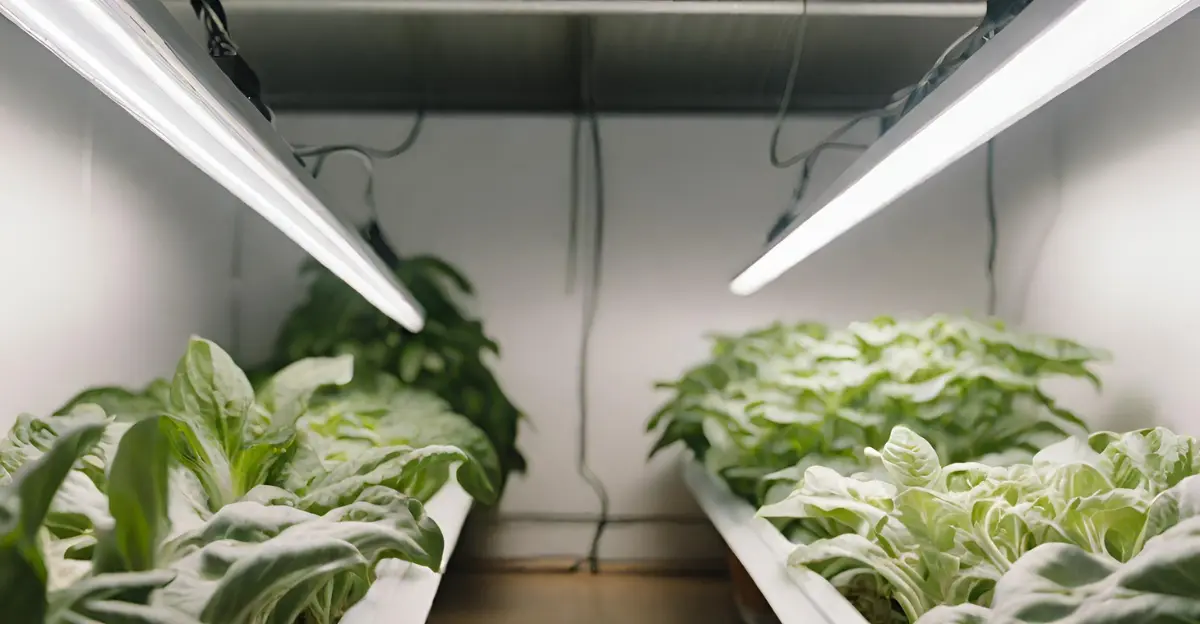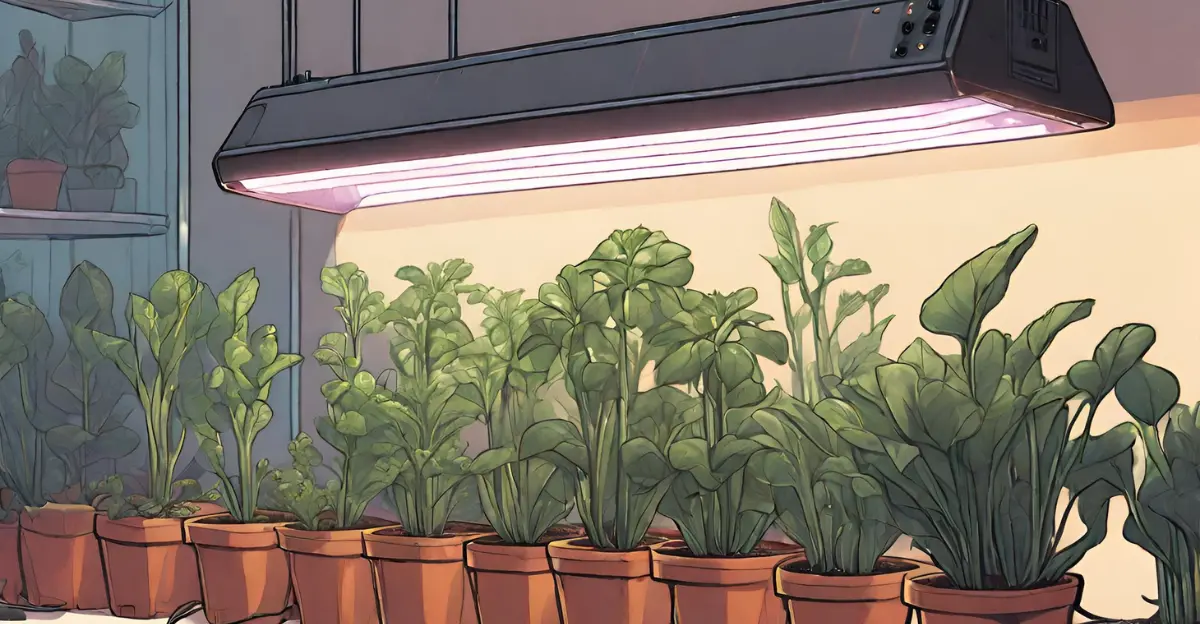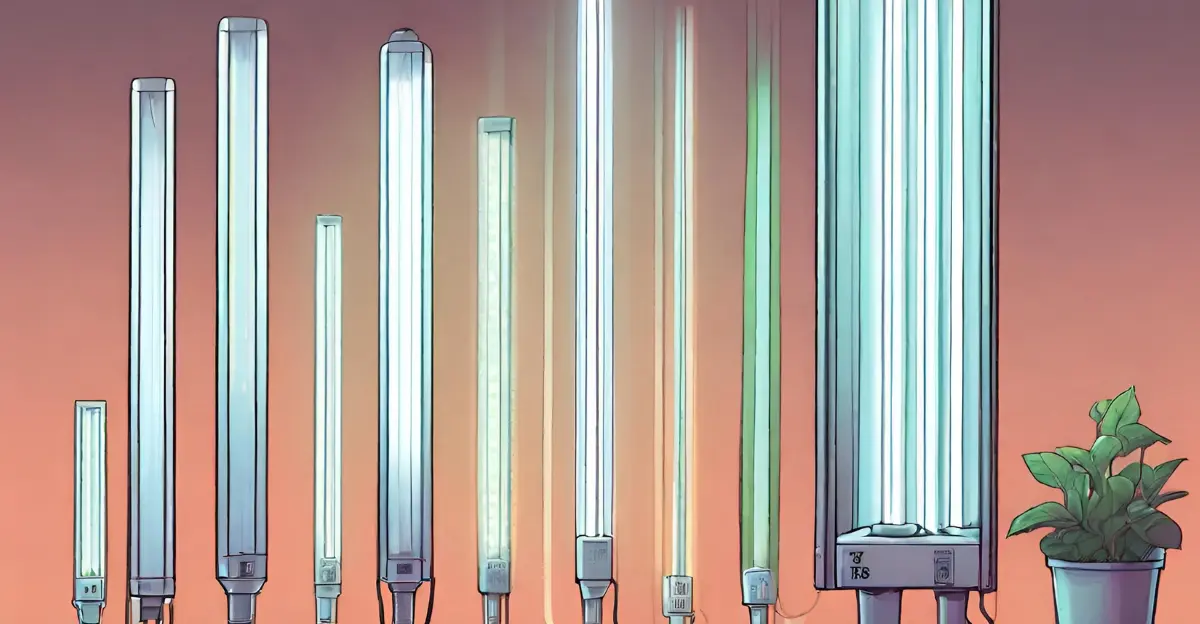T5 vs T8 Grow Lights: Which Is Better for Your Indoor Farm

As an indoor agriculture buff, I know the struggle of deciding between the spectrum of grow light options.
Within the world of fluorescent bulbs, T5 and T8 systems stand out as two of the most popular choices for indoor farms and home gardens.
But with confusingly similar naming, how do you determine which is best for your leafy greens or flowering crops?
I’m here to shine some light on the matter and reveal the key factors that set T5 and T8 fluorescent grow lights apart.
By the end, you’ll discover which lighting approach is tailored to help your indoor plants and production goals thrive!
Let’s begin, shall we?
Quick Key Takeaways
| Size | T5 tubes are 5⁄8” in diameter, concentrating intense light in a compact form. T8 tubes are 1” wide, dispersing light over broader areas. |
| Intensity and Efficiency | T5 outputs up to 50% brighter intensity, achieving 90 lumens/watt efficiency over T8’s 60-75 lumens/watt range. |
| Color Temperature | T5 fixtures offer cooler 6500K-8000K while T8 spans 2700K-8000K to mimic sunlight. |
| Electrical Load | T5 lights operate at 120V but use 15-30% more watts and ~50% higher amperage than T8 equivalents. |
| Lifespan and Costs | T8 bulbs last roughly twice as long at 20,000-50,000 hours but T5 energy savings lead to better value over decades. |
| Upfront Price | T5 fixtures cost 2-4X more than basic T8 setups. Ongoing T5 bulb replacement also runs higher. |
T5 Grow Light Overview

T5 refers to the diameter—5/8 inches—of the straight tube bulbs these systems use. This compact size allows T5 fixtures to concentrate serious light output.
The key components of complete T5 setups include the:
Typical T5 tube lengths are 2, 4, or 8 feet. They come in light spectrums from warm to cool white, commonly 3000K to 6500K—like natural daylight.
T5 grow lights are good for starting seeds, and cloning, leafy greens, herbs, and houseplants. Larger gardens might use T5 as supplemental lighting before swapping to LED or HID systems.
Pros of T5 Lights
Cons of T5 Lights
This makes T5 great for compact, performance-driven gardens!
FURTHER READING: What Is a T5 Grow Light and Should You Use It in 2024
T8 Grow Light Overview

T8 refers to the diameter of the fluorescent tubes used in the lighting system. The “T” stands for tubular, and the “8” signifies that the diameter of the tube is eight-eighths of an inch or 1 inch.
This larger diameter allows T8 lights to provide less concentrated but wider coverage than their T5 counterparts.
T8 grow lights typically come in lengths of 4 feet. They offer a range of color temperatures, commonly ranging from warm white to daylight white, between 2700K to 6500K.
T8 systems share several key components with T5 systems, including fixture housings, ballasts, and reflectors.
IMPORTANT: While these components are shared, the tubes themselves are not cross-compatible due to differences in size and electrical requirements.
T8 grow lights are particularly well-suited to larger growing areas or taller plants with higher overall light needs.
Pros of T8 Grow Lights
Cons of T8 Grow Lights
T8s strike a balance between cost and coverage but fall short of efficiency for some applications.
With that out of the way, let’s get into a head-to-head T8 vs T5 grow lights comparison.
Size and dimensions

When evaluating grow lights, physical size and dimensions should not be overlooked as they significantly influence performance.
As a quick refresher from our earlier overview:
So what does this diameter difference mean in practical terms for your garden?
The higher surface area to volume ratio of narrow T5 tubes allows for exceptional light intensity, up to 50% brighter than T8 lights. More photons can interact with plants per unit area.
The tradeoff is concentrated T5 lights cover 2-4 sq ft per 4ft tube, while T8 lights disperse energy over 4-8 sq ft per 4ft tube.
Compact T5 sizes also provide versatility in vertical farming applications, where the goal is stacking production layers. The slim profile works well on narrow shelves.
Conversely, wider T8 tubes can intrude on overhead shelves unless sufficient height exists.
Typical T5 spacing ranges from 3 to 6 inches between lamp centers. Whereas T8 spacing varies from 6 to 12 inches apart to prevent overlap.
So T8 fixtures tend to be more expansive side-to-side.
ADVICE: I’d recommend T5 lights for compact production areas like vertical farms, growth chambers, and propagation tents that demand high intensity across less canopy space. For more horizontally oriented spaces focused on wider dispersion like greenhouses, the profile, and coverage of T8 lamps may suit your needs better.
Light intensity, output, efficiency (lumens/watt)

When comparing grow lights, key factors like intensity, total output, and electrical efficiency should top your checklist.
These performance metrics directly impact how much usable light your plants receive to drive photosynthesis and growth.
Light Intensity
T5 lights output intense light streams (1.5-2 times higher than T8 with the same power), thanks to photons concentrating in compact tubes.
Tested T5 fixtures achieve PAR levels around 90–100 micromoles per meter squared per second. That’s 30-50% higher intensity than average T8 fixtures, emitting 50–90 μmol/m2/s.
Higher intensity light energizes faster plant growth and bigger yields.
Light Output
Physically larger T8 bulbs can emit more total lumens. A standard 4ft T8 tube churns out 3000–5000 lumens, while 2ft T5 models produce around 2000–2500 lumens.
But T5 fixtures compensate by hanging multiple tubes. 9 quantities of 24W T5s produce around 18000–22500 lumens, rivaling or exceeding 54W T8s!
When factoring system wattage, T5 setups match or beat T8 total light production.
Luminous Efficiency
T5 lights generate up to 90 lumens per watt—30% higher efficiency than T8 lights, managing 60–75 lumens per watt.
T5 fixtures provide more light per electricity unit consumed. This directly lowers operating expenses from your power bill over time.
One tradeoff: T5 dense light creates heat, demanding proper ventilation management.
Clever efficiency innovations let modern T5 systems shine brighter with less energy than traditional T8s!
ADVICE: More intensity also speeds up growth in a compact form. For small spaces seeking high performance, I suggest T5 grow lights to be your best bet!
Color temperature options

Color temperature is important as it impacts the wavelength mix emitted. It is measured in degrees Kelvin (K).
T5 grow lights concentrate light output in the blue and red spectral regions ideal for plant growth.
They offer cooler color temperatures from 6500K to 8000K, with some 3000K options. There are also 4000K and 5000K T5 grow lights available.
T8 grow lights provide a wider range from 2700K (warm white) to 8000K (cool white) that mimics natural sunlight.
The balanced spectrum aims to deliver all beneficial wavelengths to plants. These lights look bright, and white to humans.
ADVICE: For high-intensity performance, use cool white (5000K-6500K) T5s, as it contains more blue. To mimic the sun’s arc, try grow lights with a warmer color temperature around 2700K-3000K and a balanced spectrum.
Electrical load and requirements
I know wattage, amps, voltages—it can get confusing fast!
But understanding power system demands will pay dividends ensuring your indoor farm runs smoothly.
Let’s explore how T5 and T8 grow lights compare.
Power Draw in Watts
On average, a standard 4-foot 54W T5 high output (HO) tube puts out 5000-5500 lumens. Compare that to a 4-foot 32W T8 tube emitting 2900-3100 lumens.
So for equivalent light output, T5 lights utilize more watts but with greater efficiency.
However, T5 grow lights require about 15-30% more wattage than equivalent T8 lights, allowing them to produce more light output per watt.
Amperage Demands
Electrically, T5 and T8 systems operate on 120V household circuits. No special connections are needed!
However, those compact T5 tubes do require proportionally higher amperage for equivalent lumens.
A 4-foot 54W T5 HO tube draws ~0.45 amps. Whereas a standard 4-foot 32W T8 bulb pulls ~0.27 amps (source).
So while operating voltages are equal, current demands run over 50% higher for T5 fixtures.
Daisy Chaining Capabilities
Here’s an area where T5 lighting shines—many systems allow “daisy chaining” to link multiple fixtures through one power cord.
This enables expanding your grow operation without worrying about access to additional outlets!
But T5’s higher amp draw per lamp means you can chain fewer units before electrical overloading occurs.
Whereas lower-draw T8 fixtures can link more total units, though likely with less intense light output.
So what’s the verdict?
T5 grow lights generally require higher wattage and amperage but produce brighter, more concentrated light. While T8s consume less power, they also emit less total light for the same coverage area.
ADVICE: I suggest T5 systems for the ultimate in intensity and efficiency—just be sure your electrical system can support the extra amp demands! T8 works better for lower intensity and operating cost goals across larger spaces.
Lifespan and long-term costs
When selecting grow lights, it’s wise to evaluate lifespan and long-haul expenses upfront. After all, you want your indoor farm to run smoothly for years to come!
On average, T5 fluorescent grow light bulbs last 10,000-20,000 hours before requiring replacement—about half the 20,000-50,000 hour lifespan of T8 bulbs.
EXCEPTION: Some high-quality T5 bulbs can last up to 36,000 hours, approaching the lifespan of T8 bulbs.
Given their extended runtime, T8 tubes don’t need swapping as often. This directly lowers replacement bulb costs over decades of operation.
However, T5 fixtures compensate with far greater luminous efficiency, emitting up to 90 lumens per watt—nearly 30% higher than T8’s 60-75 lumen per watt output.
In plain terms, T5 lights produce more total light while consuming less electricity.
And those future energy savings can help offset the higher initial purchase and ongoing replacement prices.
KEY TAKE HOME: T8 lights edge out T5 fixtures on raw bulb lifespan ratings and direct replacement costs over time. But once energy efficiency enters the picture, T5 systems tend to offer the best value over decades of use.
Cost for fixtures and bulbs
It’s essential to consider the upfront expenses for entire lighting systems and the availability of compatible ballasts, reflectors, hangers, and replacement bulbs.
Both T5 and T8 lights are popular choices for indoor gardening, and compatible ballasts, reflectors, hangers, and replacement bulbs are widely available both locally and online.
KEY TAKE HOME: T8 fixtures carry lower upfront costs but T5 systems offer greater efficiency and faster payback through energy savings over an extended timeframe. The choice comes down to your budget, growing goals, and planned duration of use.
Final Takeaways and Recommendations
By now, I hope the T5 vs T8 grow light distinctions are crystal clear!
So which is better for your needs? Here are tailor-made suggestions:
For propagation tents, vertical layers, or growth chambers under 75 sq ft, I recommend high-output T5 lighting.
Alternatively, if your greenhouse or warehouse ranges from 75-500 sq ft with flexible height, standard T8 systems may better suit your spatial needs and budget.
Once passing 500 sq ft, consider upgrading to commercial LED fixtures or high-pressure sodium systems to cover expansive canopies.
Though fluorescents like T5 and T8 lights have come a long way, they simply can’t match elite technologies for large-scale facilities.
And remember—a healthy garden starts with proper lights. Choose what’s best for your plants and production in the long run.
FURTHER READING: What Color Light Is Worst for Plant Growth (2024 Updated)
Meet your guide
Dhruvir Zala